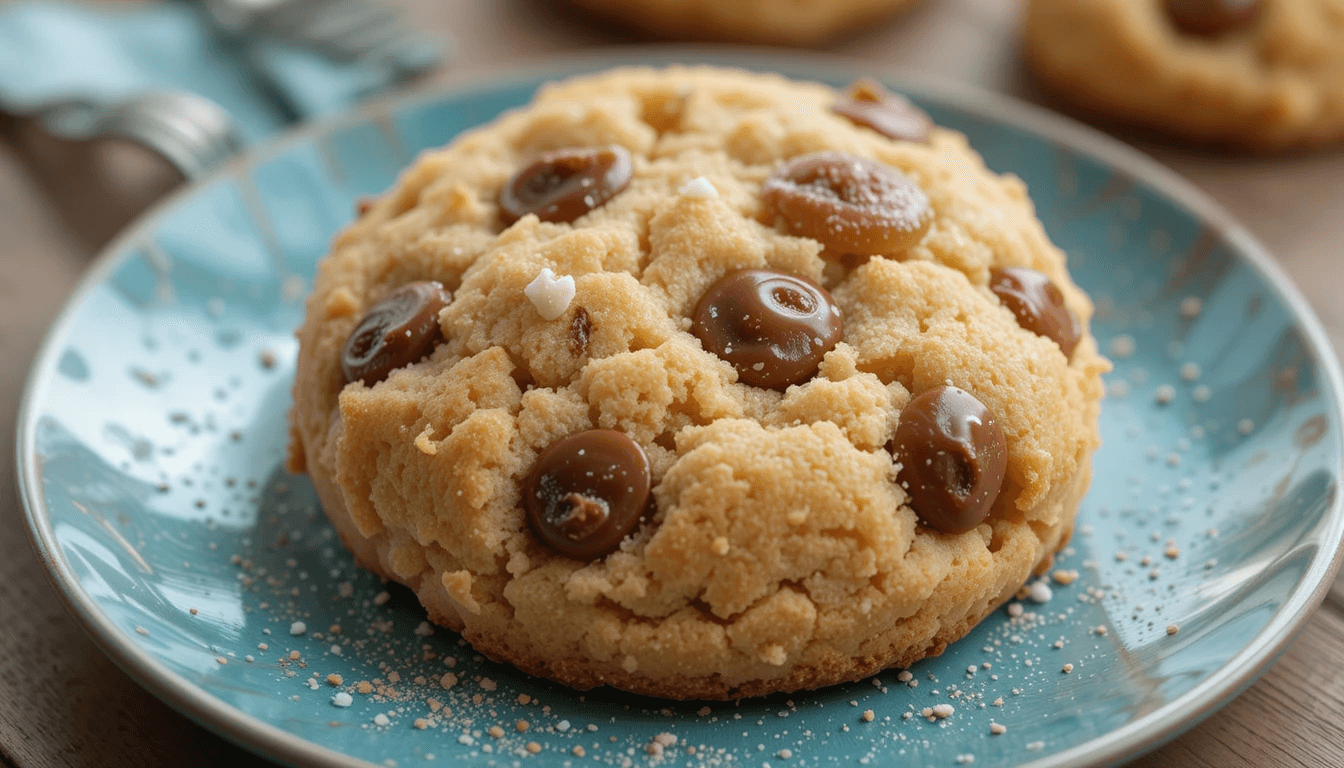crookie recipe marries the richness of a classic cookie with the flaky, buttery layers of a croissant. It embodies a playful spirit while satisfying sweet cravings in a single treat. If you’ve ever dreamt of combining your favorite pastry with a traditional cookie, this crookie recipe may be your new go-to indulgence.
Introduction
Have you ever found yourself torn between reaching for a buttery croissant or a chewy cookie? If so, you’re not alone.
Many of us have stood in front of a bakery display, struggling to pick one sweet delight when both beckon.
A few innovative bakers decided to solve this conundrum by creating something that combines the best traits of both pastries, and that’s exactly how the crookie recipe came to life.
In essence, the crookie recipe takes a flaky croissant pastry dough and marries it with a cookie dough, creating a hybrid dessert that’s crisp on the outside and soft at the center.
Picture the initial crunch of a well-laminated croissant followed by the comforting sweetness of cookie dough. Every bite is an experience in layering: you might taste buttery flakes first, then get a ribbon of chocolate, or you may sink your teeth into a swirl of cookie dough enveloped by tender pastry.
Throughout this guide, you’ll discover everything you need to know about mastering the crookie recipe. From ingredient breakdowns and step-by-step instructions, to creative variations that transform your crookie recipe from a simple dessert into a show-stopping treat, we’ve got you covered. Consider this your ultimate resource for baking success—one that calls on both the scientific approach and the whimsical side of pastry making.
Disclaimer: This article is for informational purposes only and does not replace professional veterinary advice. Always consult a qualified healthcare provider or baking expert for specific dietary, health, or ingredient-related questions.
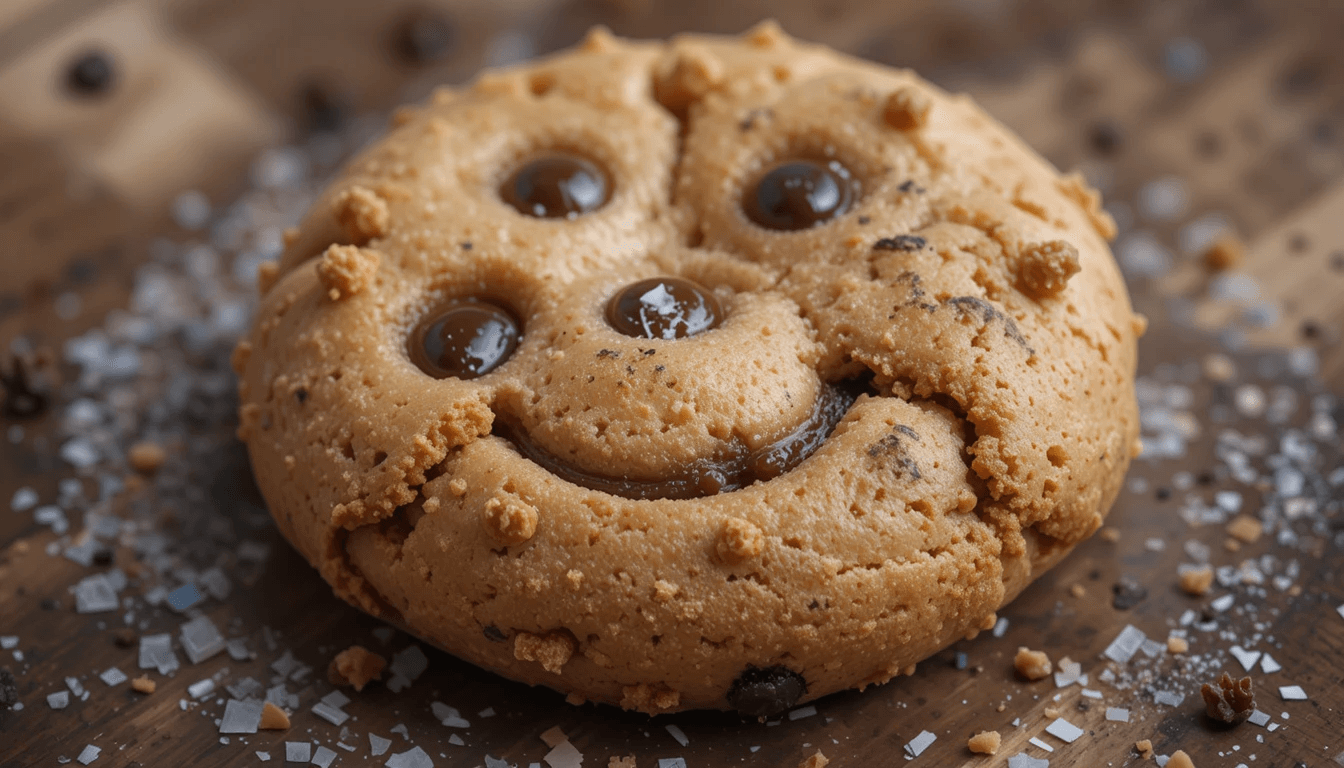
What Is a Crookie?
In the grand pantheon of hybrid desserts, the crookie has quickly gained fame. People may initially scratch their heads upon hearing the name, but one bite is all it takes to become a believer. The crookie recipe merges all the flakiness of a croissant with the doughy sweetness of a cookie, resulting in something you’d typically find on a bakery’s top shelf.
- Croissant Element: Croissants rely on lamination—a meticulous process of folding butter into dough multiple times to create thin, alternating layers of dough and butter.
- Cookie Element: Cookie dough often includes sugar, butter, and flour, yielding a softer, denser crumb.
When you marry the two, the crookie recipe blends light pastry layers with a sweet, satisfying cookie interior. It’s a fun departure from the cronut, donut-croissant crossover, and might just redefine your concept of what a pastry can be.
Where Did It Come From?
Although exact origins can be murky—some claim to have spotted early versions in small French bakeries—modern popularity likely owes much to social media and experimental bakers. Curiosity spurred pastry chefs everywhere to try swirling brownies, cookies, and croissants into one creative swirl. The result? The now-legendary crookie recipe we’re unpacking today.
Key Ingredients for the Perfect Crookie Recipe
Creating the perfect crookie recipe is about balancing flavor, texture, and technique. Here’s a comprehensive breakdown in an easy-to-reference table:
| Ingredient | Function | Recommended Amount |
|---|---|---|
| All-Purpose Flour | Provides structure to both the croissant and cookie dough | 2 cups (for croissant dough) + 1 cup (cookie) |
| Cold Butter | Essential for flaky layers in the pastry portion | 1 cup (2 sticks) total |
| Yeast | Gives croissant dough its lift and airy layers | 2¼ tsp (1 packet) |
| Sugar | Sweetens the cookie dough and can caramelize the pastry | ¼ cup (croissant) + ½ cup (cookie) |
| Salt | Enhances flavor and supports gluten structure | 1 tsp (croissant dough) + pinch (cookie) |
| Eggs | Helps bind dough; adds richness | 2 large eggs (1 in pastry, 1 in cookie) |
| Milk or Water | Hydrates dough; mild flavor enhancement | ¾ cup (croissant dough) |
| Chocolate Chips or Chunks | Adds sweet bursts of chocolate in the cookie portion | 1 cup |
| Vanilla Extract | Boosts aroma and flavor profile for the cookie dough | 1 tsp |
Why These Ingredients?
- All-Purpose Flour: Enough gluten to form a stable pastry dough, yet versatile enough for cookie dough.
- Cold Butter: Maintaining cold, laminated butter is critical to get the classic croissant flake in your crookie recipe.
- Yeast: Activates the pastry dough, creating those airy layers we love in a croissant.
- Sugar & Salt: Key flavors that act as a dynamic duo—salt balances sweetness, while sugar helps browning.
- Eggs: Help combine all those components seamlessly, adding moisture and structure.
- Chocolate & Vanilla: Classic cookie flavors that keep you reaching for more.
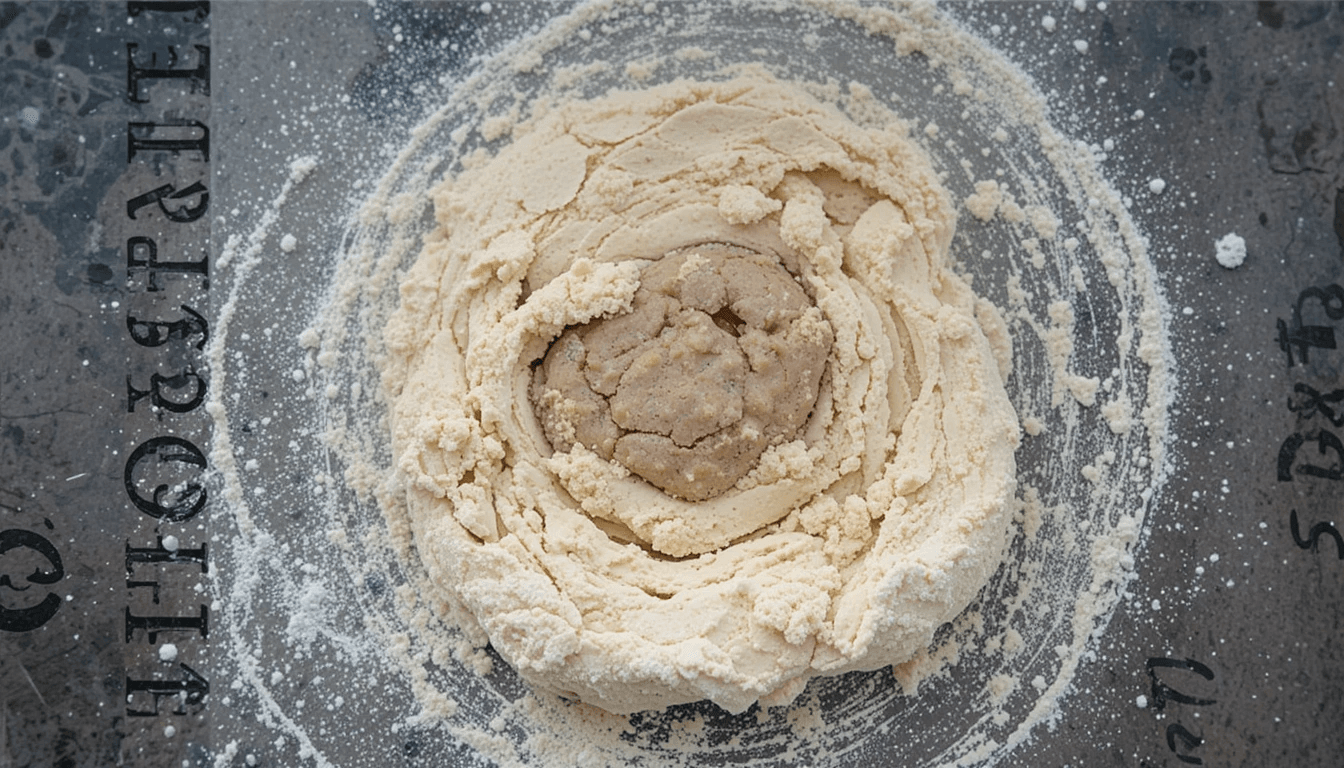
Step-by-Step Guide: Crafting Your Crookie Dough
The crookie recipe demands a bit of extra love because you’re essentially creating two different dough components: the laminated croissant dough and the cookie dough. Patience is crucial. Let’s walk through it one step at a time.
1. Prepare the Croissant Dough
- Activate Yeast: In a small bowl, combine 2¼ teaspoons yeast with warm milk or water (around 100°F/38°C) and a teaspoon of sugar. Let it sit for about 5 minutes until it’s foamy.
- Form the Base: In a larger bowl, mix 2 cups of all-purpose flour, ¼ cup sugar, and 1 teaspoon salt. Stir in 1 lightly beaten egg and the foamy yeast mixture.
- Knead & Rest: Knead the dough until smooth (about 5-7 minutes). Wrap it in plastic and let it rest in the fridge for at least 2 hours.
2. Laminate the Dough
- Roll Out Dough: Roll the chilled dough into a rectangle. Place cold butter (½ cup) in a thin, even layer on two-thirds of the dough’s surface.
- Fold & Turn: Fold the dough into thirds (like a letter). Rotate it 90 degrees, roll it out again, fold again, then refrigerate. Repeat this process 2-3 times. Each fold adds layers to your crookie recipe base, making it extra flaky.
3. Prepare the Cookie Dough
- Cream Butter & Sugar: In a separate bowl, cream ½ cup butter with ½ cup sugar. Add 1 egg and 1 teaspoon vanilla extract.
- Add Dry Ingredients: Gently fold in 1 cup of all-purpose flour with a pinch of salt. If you want chocolate chips, mix in a generous cup.
- Chill: Cookie dough firms up best when chilled, so refrigerate it for at least 30 minutes.
4. Combine Croissant and Cookie Dough
- Spread the Cookie Dough: Roll out the croissant dough into a rough rectangle (about ¼-inch thickness). Spread or dot your chilled cookie dough across the surface.
- Roll & Fold: Carefully roll the layered dough into a log. Slice it into segments (about 1-2 inches thick) to form individual crookies.
- Final Proof: Let the crookies rest on a parchment-lined baking sheet for 30-45 minutes. This step allows the yeast in the pastry portion to get one last boost.
5. Bake
- Temperature & Time: Preheat your oven to 375°F (190°C). Bake for about 15-20 minutes, or until golden brown on top.
- Cool & Decorate: Let them cool for 10 minutes before drizzling with chocolate or dusting with powdered sugar.
At this stage, your crookie recipe is nearly complete—the aroma alone might draw friends and family into the kitchen, eyes wide and mouths watering!
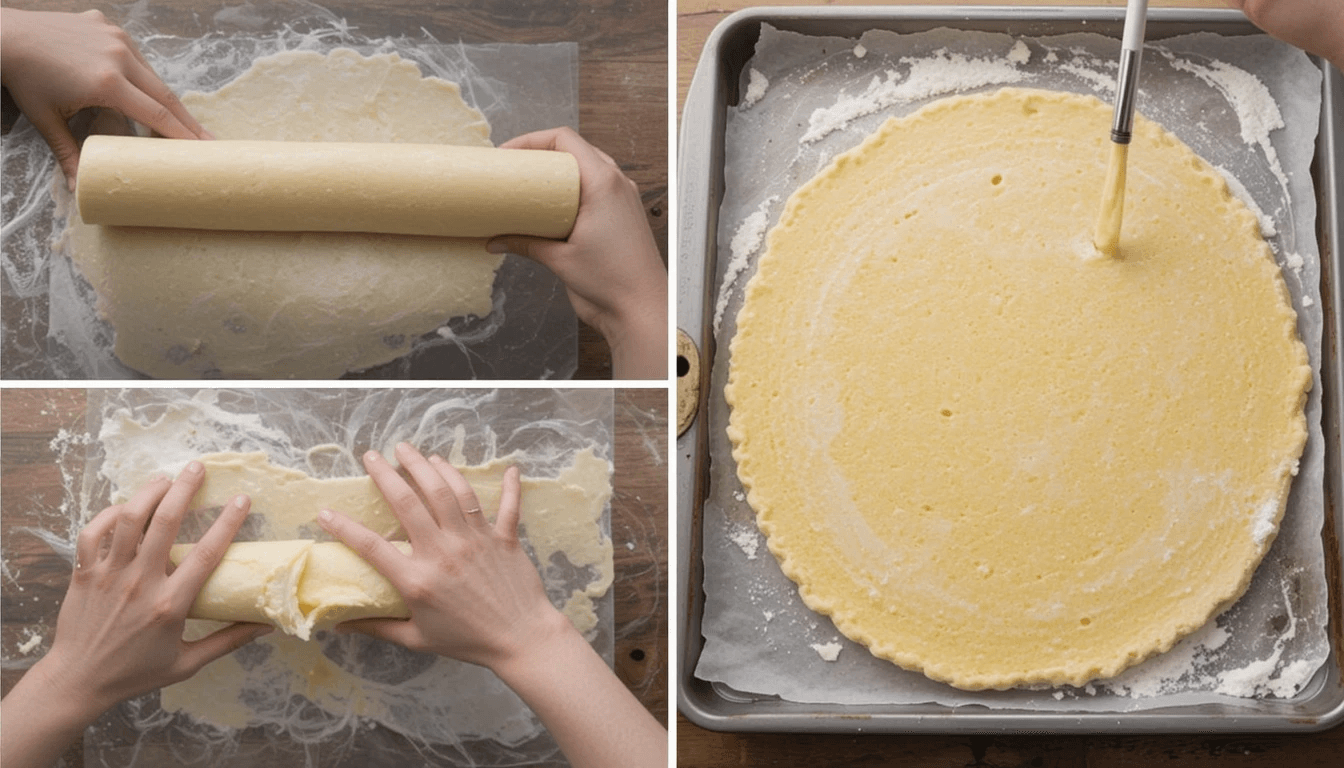
Rolling, Shaping, and Baking Techniques
Baking might be a science, but there’s room for artistry—especially with a crookie recipe. The following tips ensure your pastries come out looking bakery-fresh:
- Uniform Thickness: Roll the dough as evenly as possible. Thinner sections bake faster, potentially burning before thicker sections are fully cooked.
- Chill the Dough: Both the croissant dough and cookie dough handle best when cold, giving you precise shapes and layers.
- Egg Wash: For that glossy, golden finish, lightly brush the top of each crookie with beaten egg before baking.
Pro Tip: Avoid excessive flour on your work surface. While you don’t want the dough to stick, too much flour could make your crookie recipe dough tough.
Troubleshooting Common Crookie Recipe Pitfalls
Even professional bakers encounter hiccups. Here’s how to fix the most common missteps in a crookie recipe:
- Greasy Layers: If your dough becomes greasy, the butter likely melted during lamination. Always work in a cool environment, chilling the dough between each fold.
- Dense Texture: Overworking the dough can lead to tough pastries. Knead just enough to incorporate ingredients, then allow adequate rest time.
- Cookie Dough Leaks: Sometimes the cookie dough oozes out during baking. Ensure you roll and fold carefully, sealing edges gently. If you see small tears, pinch them closed or patch with dough scraps.
Quick Fixes
- Chill, Chill, Chill: Anytime you sense the dough is getting too soft, pop it back in the fridge.
- Check Yeast Freshness: Old or improperly stored yeast won’t rise effectively.
- Adjust Baking Time: If the tops are browning too quickly, lower the oven temperature slightly and bake longer.
Health Considerations and Nutritional Insights
The crookie recipe is undeniably indulgent, rich in sugar, fat, and carbohydrates. While it’s a fun treat to enjoy, moderation is key—particularly if you’re monitoring daily caloric intake or sugar consumption. According to the U.S. Food & Drug Administration (FDA), limiting your overall sugar and saturated fat intake can support better long-term health outcomes.
Potential Nutritional Concerns
- High Calorie Content: Butter, sugar, and chocolate chips add up quickly.
- Refined Carbohydrates: White flour can spike blood sugar in those sensitive to glucose.
- Allergens: Eggs, wheat, and dairy are common allergens; consider substitutes if needed.
Healthier Twists
- Whole Wheat Flour: Swap out half the all-purpose flour for a whole-grain alternative.
- Reduced Sugar: Try natural sweeteners like honey or coconut sugar, though this may slightly alter taste and texture.
- Dark Chocolate: Using chocolate with at least 70% cocoa can provide antioxidants and reduce total sugar content.
Disclaimer: Always consult a registered dietitian or healthcare professional for personalized dietary advice. The crookie recipe, while delicious, should be enjoyed as part of a balanced diet.
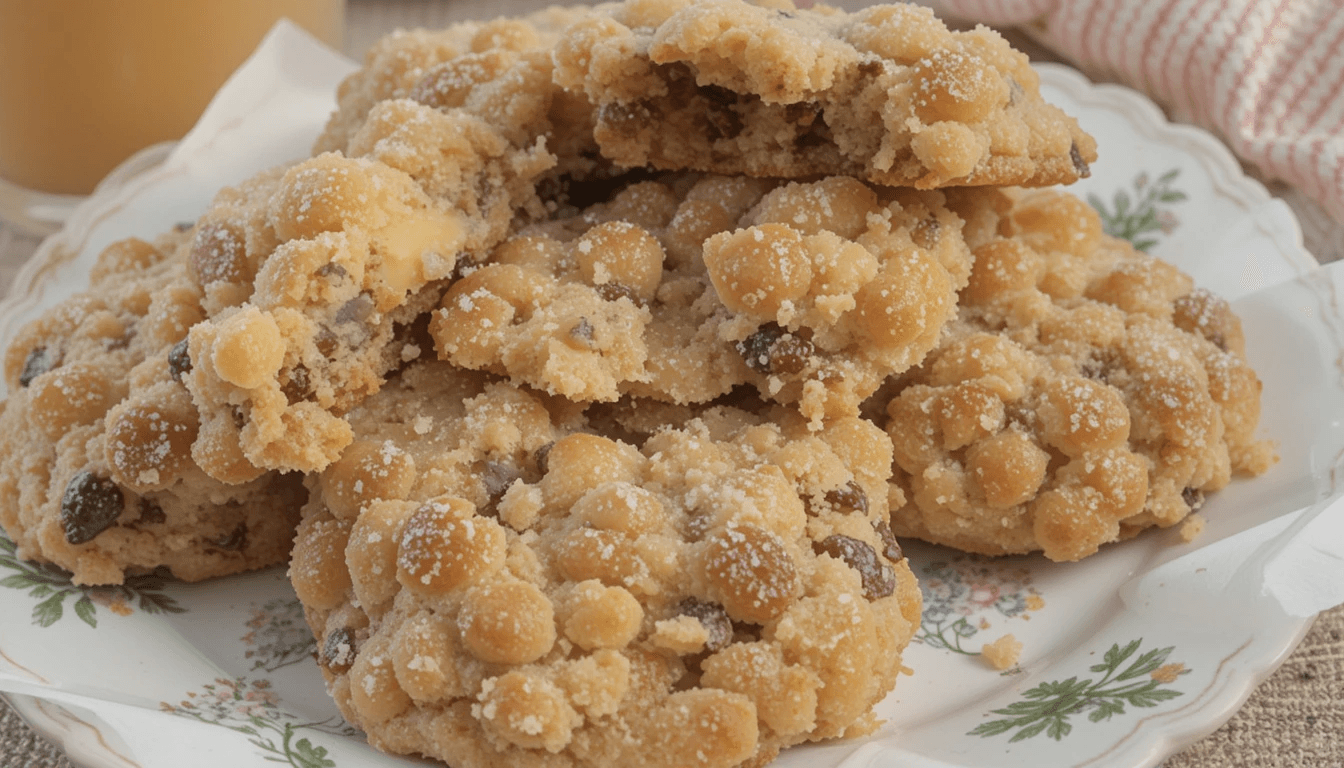
Crookie Variations and Flavor Twists
One of the joys of the crookie recipe is its adaptability. Here are some creative flavors you can experiment with:
- Peanut Butter Cup Crookies
- Add peanut butter to the cookie dough.
- Sprinkle chopped peanut butter cups.
- Roll the dough, slice, and enjoy the sweet-and-savory layers.
- Cinnamon Roll Crookies
- Incorporate brown sugar and cinnamon into the cookie portion.
- After baking, drizzle a simple icing sugar glaze for that gooey, comforting finish.
- Fruit-Filled Crookies
- Stir in dried fruit (like cranberries or dried apricots) into your cookie dough.
- Consider adding a bit of cream cheese for a tangy note.
- Great for brunch or a more elevated dessert.
- Gluten-Free Attempt
- Use a high-quality gluten-free flour blend for both the pastry and cookie components.
- Keep a close eye on texture and moisture levels, as GF dough can be more delicate.
Remember, each variation might adjust your baking times or require minor technique changes. Always keep an eye on how your dough is handling the new additions.
(FAQ)
1. What is the secret ingredient to keep cookies soft?
Using brown sugar adds moisture and helps your crookie recipe remain soft. Keeping dough chilled before baking also preserves texture. Don’t overmix, and you’ll enjoy a tender, melt-in-your-mouth result.
2. Who created the crookie?
There’s no single official inventor, but experimental pastry chefs popularized the crookie recipe online. Many believe it’s a spin on hybrid desserts like the cronut. Social media buzz also propelled its fame worldwide.
3. How to cook Cokies?
Generally, combine butter, sugar, flour, and flavorings, then bake at moderate heat. For a crookie recipe, you’ll laminate croissant dough and swirl in cookie dough for extra flair. Keep a watchful eye to prevent overbrowning.
4. How many calories are in a cookie croissant?
A croissant-cookie crossover can range from 250 to 400 calories, depending on ingredients. In a crookie recipe, extra chocolate or sweeteners increase that number. Always check portion sizes and enjoy this treat in moderation.
Key Points
- Flaky + Sweet: crookie recipe unites croissant layers with cookie dough’s sweetness.
- Ingredient Importance: Yeast for lift, cold butter for lamination, sugar for caramelization.
- Chilling Matters: Cooling dough ensures defined layers and prevents butter melt.
- Troubleshooting: Address grease, density, and dough leakage by working in a cool environment and sealing folds.
- Personalize: Add peanut butter, fruits, or cinnamon swirls.
- Moderation: Rich treat with high calorie content—enjoy responsibly.
Conclusion
You’ve journeyed through the entire crookie recipe, from understanding its pastry-cookie hybrid origins to perfecting every fold and layer. If you follow the techniques and tips laid out in this guide—while injecting your own creativity—you’ll soon be pulling trays of golden, flaky, sweet crookies out of your oven. Remember that every kitchen mishap is a lesson in disguise, so don’t be discouraged if your first attempt doesn’t look picture-perfect.
Ultimately, the crookie recipe celebrates fun, innovation, and deliciousness all at once. Whether you keep it classic with chocolate chip cookie dough or experiment with bold flavors, your taste buds will thank you. We hope you’ll give this recipe a whirl, share it with others who crave sweet pastry hybrids, and feel free to comment with your own crookie adventures!

